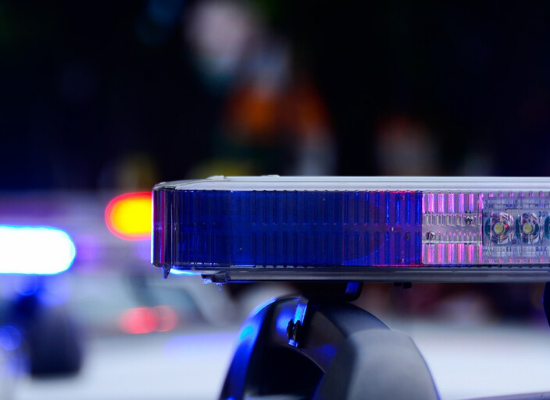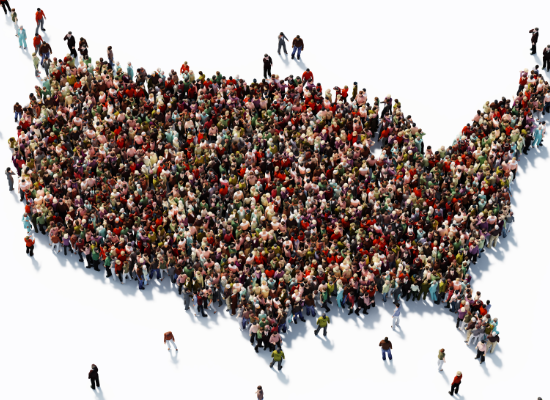
Stephanie Hepburn is a writer in New Orleans. She is the editor in chief of #CrisisTalk. You can reach her at .
Like many Indigenous boys in Australia, Joe Williams dreamt of becoming a rugby player. His father, Wilfred Williams, played in the National Rugby League. “I grew up watching him play on TV,” says Williams. “I wanted to do everything I could to do that too.” At night, he slept with a football in his arms.
At 13, Williams, a gifted athlete, was scouted and recruited by the Sydney Roosters, a National Rugby League club, where he played locally against older teens. By the following year, his opponents and teammates were adults. “There are rules against that now,” he says. Rugby players don’t wear helmets or much protective gear, if any. “It’s certainly not faster or fitter than American football, but it’s a hell of a lot dirtier.” Like many junior players, he faced hazing. “The other players were going to make sure I was tough enough, so I got all sorts of head and late shots.”
He experienced his first massive concussion when he was 13. “It knocked me completely senseless,” he says. The aftermath left him confused, disorientated, and paranoid. He points out that confusion from the concussion made him insecure and uncertain of himself, contributing to suicidal thoughts and a negative inner voice, which he calls “head noise.” “I questioned everything,” he says, “every decision, every conversation.” “I thought people were talking about me.”
The head noise followed him when he moved from his home in Wagga Wagga to Sydney to play rugby professionally. Playing for the National Rugby League went hand in hand with celebrity fandom and a fast-paced lifestyle. “I was living in the bright lights of a city that doesn’t sleep,” he says. “To keep going, I drank as much as possible and took enough drugs to kill a small elephant.”
In his early twenties, Williams’ childhood dream of playing in the league like his father had come true. “I was on TV every weekend,” he says. He had a wife and two small children. “My life had so much promise, but I just wanted to escape the noise in my head.” Instead of dimming over time, the negative inner dialogue within continued to grow. The highs and lows also increased. “My life was coming off the rails.”
He didn’t tell anyone about his shifting moods or the noise in his head. Mental health stigma played a role, but Williams, who is Wiradjuri, also didn’t want to show weakness. “We teach our children to pull themselves up by their bootstraps,” he says. He points out that it’s one of the many adverse effects of colonization on Indigenous communities and intergenerational trauma from the “stolen generations,” the tens of thousands of children the Australian government—and missionaries the government paid with subsidies—took from their families under a policy of forced assimilation.
In the 1997 Bringing Them Home report, the Human Rights and Equal Opportunity Commission (now the Australian Human Rights Commission) estimated that the government removed between 1-in-3 and 1-in-10 Indigenous children from their families between 1910 to 1970. The updated report, published in 2017, reiterated the estimate. Government agencies and missionaries removed the children from their families and communities, putting them in non-Indigenous institutions or placing them with non-Indigenous families.
Because Williams told no one of his symptoms, he thought his feelings of paranoia and ruminating insecurity were commonplace. “I thought everyone had this sort of conversation with themselves,” he laughs. When he began playing rugby professionally, another layer of concern deterred him from reaching out. He didn’t want the league to see him as a liability. “I was trying to hold on to my spot as it was.”
While mental health awareness in Australia is improving, he says parents and coaches still perpetuate the “brush it off, walk it off” culture for young boys. For example, he recently witnessed a mother jump up when her son had fallen after being hit on the football field and yell, “Get up, mate, that didn’t hurt you!” A response, notes Williams, that makes children less likely to share how they feel because emotions aren’t a space they’re allowed to explore or discuss.
“We silence them,” he says, “and then, after telling them their entire life, to stop crying, or stop trying to express emotions – it surprises us when they don’t tell us about how they’re feeling.”
Williams experienced a suicide attempt in 2012, four years after he stopped playing for the National Rugby League. Toward the end of his career, he was no longer using alcohol and drugs; yet, the highs and lows continued (a psychiatrist later diagnosed him with bipolar disorder). Episodes exacerbated by no longer enjoying playing football, high visibility, and a steady stream of criticism from internet trolls. His personal relationships suffered. “My partner and I separated,” he says. “I re-partnered and separated again, blaming everyone but the person in common with all the relationship failures—me.”
More than living out his childhood dream of playing professional football, Williams said he wanted to be a good dad. “Here I was, a dad of three kids and not living with any of them,” he says, “and suddenly that voice inside of me got louder.” The voice that had been ever-present, that he’d fought against since the age of 13, was growing, pulling Williams deeper and deeper into a depression. “The only way I knew to escape—I no longer drank or took prohibited drugs—was prescription drugs.”
On May 27, 2012, Williams attempted suicide. “I did everything in my power not to be here today,” he says. He’d written letters to his children, apologizing for not being the dad he promised to be and for all the milestones he would miss, like seeing them graduate and walking his daughter down the aisle on her wedding day. Later, people asked him why he didn’t reach out for help. “People don’t understand the pain you’re in during those dark times,” he points out. “The voice in my head convinced me that my kids didn’t love me, my parents hated me, and I was a failure.”
When Williams woke the following day, he felt a mix of emotions. “I didn’t know whether to be disappointed or thankful,” he says, “but I knew what I’d done wasn’t right.” Suddenly, his phone rang, and his father’s worried voice was on the other end of the line. Although Williams doesn’t remember making the call, in the night, he’d dialed a close friend and said, “I won’t be here anymore; I’m not going to wake up.” The friend alerted his family. “When my dad said, ‘She told me you tried to end your life last night,’ I burst into tears.” His father promptly got in the car and drove four and a half hours to see Williams. “He told me, ‘I’ll be there as soon as I can.’”
He and his father were sitting on Williams’ front step at his home in Dubbo, crying and laughing, when his father said, “I want to tell you about the little boy that lives inside of you.” The little boy, his father explained, is walking in a dark hallway, and he’s scared. At the end of the hallway, there’s a closed door. “If you’re with that little boy, what do you do?” asked his father. Williams responded with bravado, “I’m going to kick that door down!” His father shook his head. “What you need to do,” he said, “is grab that little boy’s hand and say, everything’s going to be alright, we’ll get through this together.”
Williams says, at first, he tried to “white knuckle” his recovery. “I just couldn’t do it,” he says, “so the next week, I took myself to the psych ward.”
Over the years, his experience with inpatient hospitalization has been both negative and positive. He says staff sometimes use medication as a restraint. “I get it; they’re scared and focused on safety,” he says, “but people are often too drugged up to be a part of their own care.” However, during his first inpatient stay, the doctors and nurses also helped him realize he had a second chance at life. “That day, I promised myself I’d do everything possible to positively affect other people’s lives.”
Today, Williams is a First Nations mental health advocate and the author of Defying The Enemy Within. He’s found purpose in helping others. “I also have a responsibility to my people,” he says. In 2020, the suicide rate for Indigenous Australians was 2.4 times that of non-Indigenous Australians, 27.9 per 100,000 compared to 11.8 per 100,000. He focuses his suicide prevention efforts on wellness, connection, hope, and scaffolding community support. “In over 500 separate nations with 2.5 thousand different dialects, we have no word for suicide,” he says. “Many believe if we have a healthy spirit, we have a healthy life.”
Indigenous Australians are constantly navigating two worlds, notes Williams, one of which has been historically unsafe for them. According to the Bringing Them Home report, most Indigenous Australian families have been affected by the now-defunct assimilation policy and forcible removal of children. “Before that, we lived in communal groups that looked after, nurtured, and took care of everyone,” he says. Williams himself grew up in a predominantly white culture. “I didn’t know who I was or my language, dance, or story.” Learning Wiradjuri tradition and practices has helped ground Williams when he faces mental health challenges. “Nearly 10 years on, every time I get in trouble mentally, I get out in the bush and around a fire and do cultural practices that fill my cup and keep my spirit strong.”
Over the years, he’s dived deeper into culturally- and trauma-informed practices through the Indigenous Trauma and Recovery Program at the University of Wollongong. Williams travels to schools and communities across Australia, including those in rural and remote areas, to speak with people about trauma, adverse childhood experiences, and his experience with mental illness. “I’ve come up against fierce opponents on the football field and the boxing ring,” he says. “Nothing compares to the enemy I fight inside my head every day.”
Photo credit: Darkeye Photography









